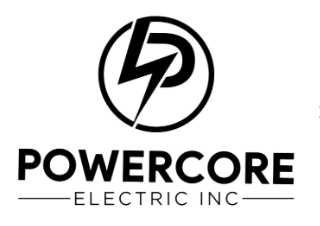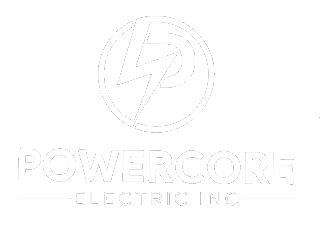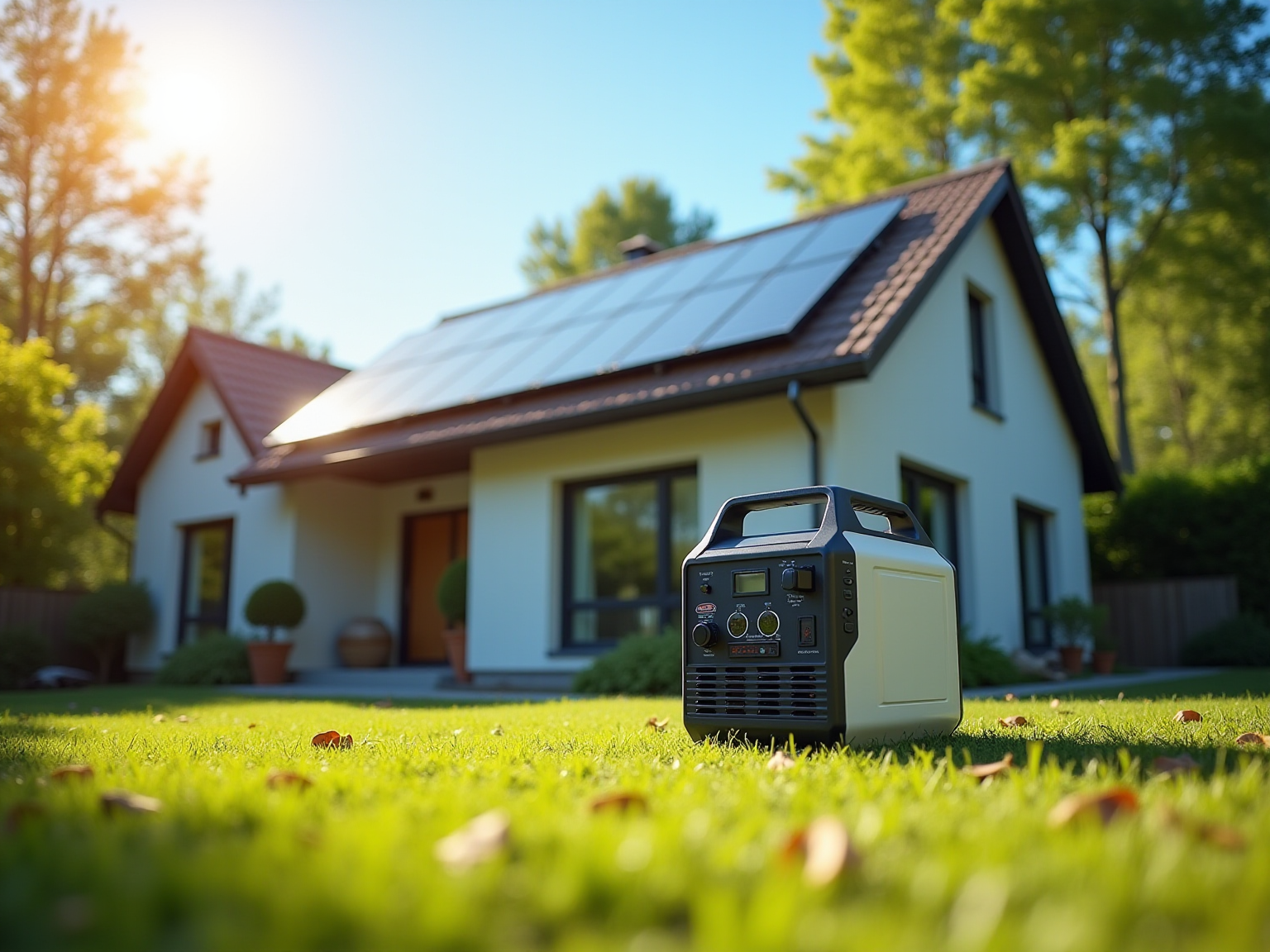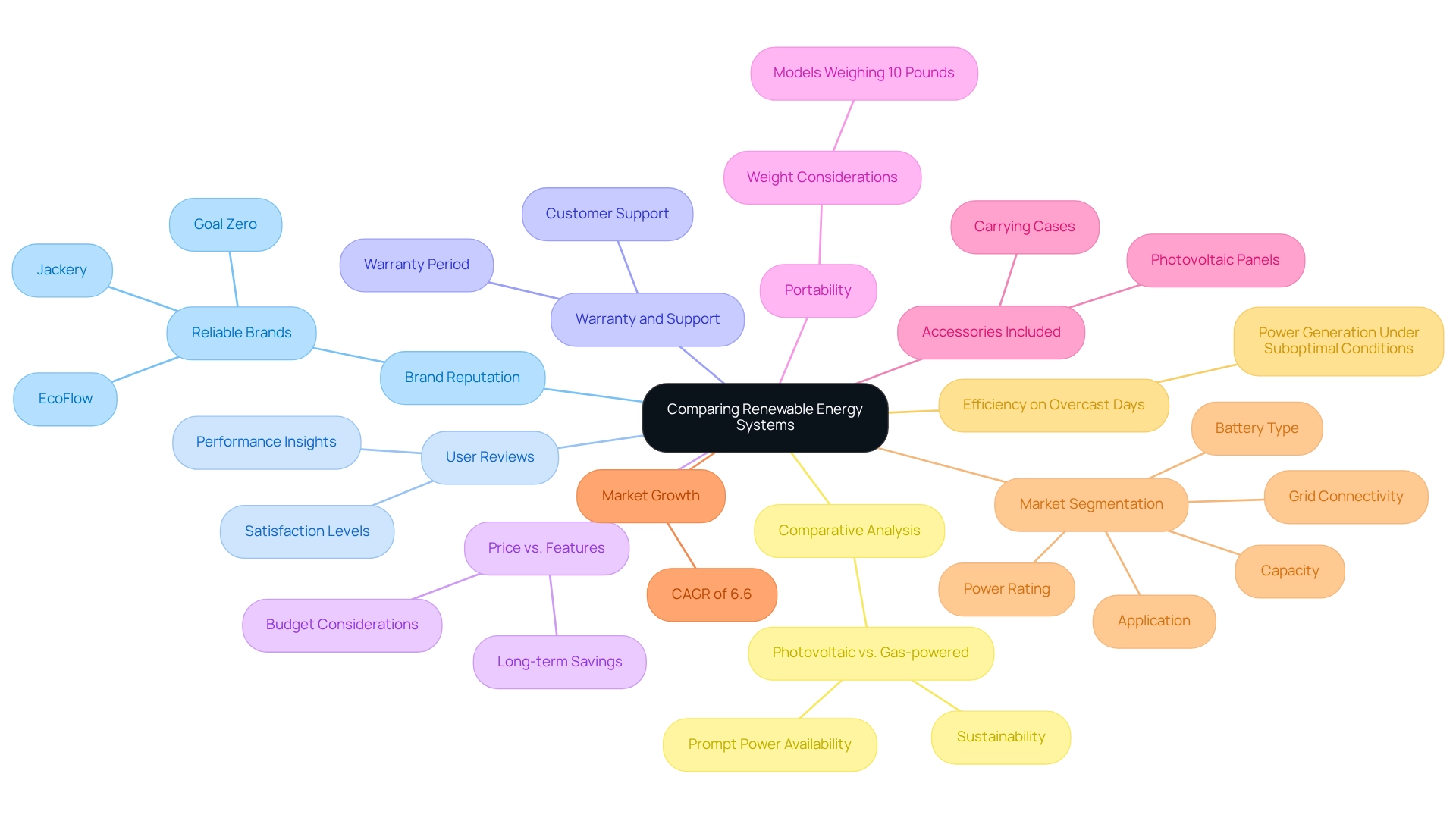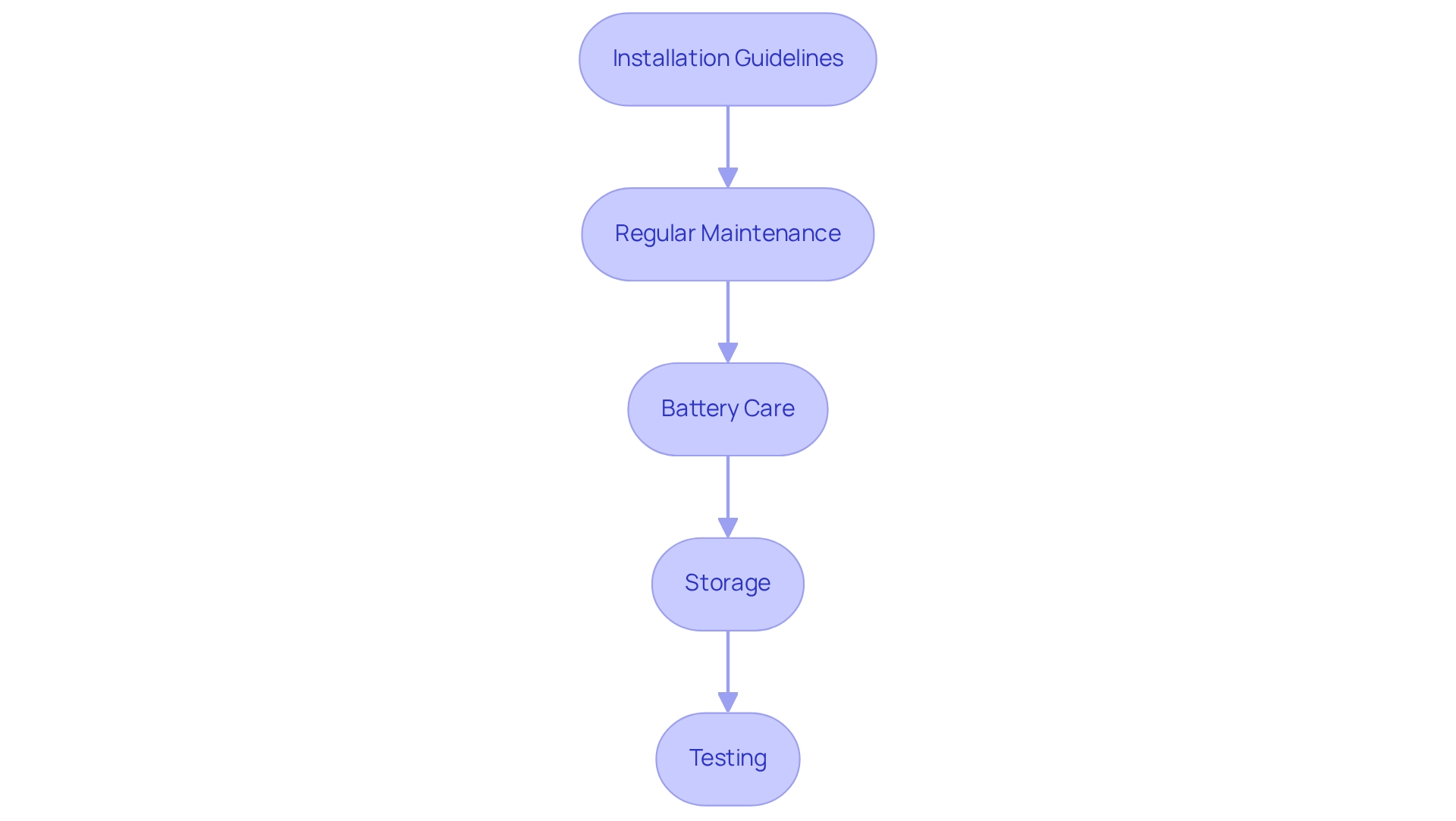Overview
Are you feeling overwhelmed by rising energy bills? You’re not alone. Many homeowners share this concern, and it’s completely understandable. The best backup solar generator for your home can be a transformative solution, offering not just relief from high costs but also a pathway to energy independence.
To make the best choice, it’s essential to evaluate key factors such as:
- Power output
- Battery capacity
- Portability
- Charging options
Understanding these criteria is crucial. We also encourage you to consider brand reputation and user reviews, as they can provide valuable insights. By doing so, you empower yourself to make informed choices that align with your energy needs and sustainability goals.
Together, we can work towards a more sustainable future. If you’re ready to take the next step, reach out to us for support and guidance on your journey to energy independence.
Introduction
In a time when energy independence and sustainability are at the forefront of our minds, backup solar generators shine as a beacon of hope for homeowners like you, who are searching for reliable power solutions. These innovative systems harness the sun’s energy, providing a clean alternative to traditional fossil fuel generators and ensuring that your essential appliances stay operational during power outages.
We understand that rising energy bills can be a concern, and as the adoption of solar technology accelerates, it’s crucial to grasp the intricacies of these generators—from their key components to the selection criteria. By doing so, you can make informed decisions that contribute not only to your savings but also to a greener planet.
Together, we can embrace the rise of backup solar generators, which is not just a trend; it signifies a fundamental shift towards a more sustainable energy future. Let’s work towards a brighter, more resilient tomorrow.
Understand Backup Solar Generators
Understanding Backup Solar Energy Systems
Are you feeling the pinch of rising energy bills? Backup energy systems offer a wonderful solution by converting sunlight into electricity and storing it in batteries for later use. This means they can be invaluable during electricity outages, providing a reliable source for essential appliances. Unlike conventional fossil fuel devices, these systems harness renewable resources, encouraging environmental sustainability and giving you peace of mind.
Key elements of backup photovoltaic units include:
- Panels that capture sunlight—even on overcast days—ensuring functionality in less-than-ideal weather conditions.
- A battery storage system that retains the electricity you generate.
- An inverter that transforms direct current (DC) into alternating current (AC) for household use.
Understanding these components is vital for homeowners like you who are considering an investment in backup power systems. They not only provide autonomy but also promote a sustainable way of living, which often leads to uncertainty about for home. Recent data shows that approximately 30% of households are now using backup power systems to manage power interruptions. This shift reflects a broader movement toward renewable power solutions, as many homeowners are looking for the best backup solar generator for home to mitigate rising electricity costs and enhance their power resilience. Local companies in Stockton, California, such as Powercore Electric, are stepping up to provide customized solutions to meet these needs, offering essential support for installation and upkeep.
Have you thought about the long-term savings a generator could bring? Case studies reveal that investing in a generator can lead to significant savings on electricity expenses, potentially reaching $20,000, depending on the system’s capacity and usage. While the initial setup costs of the best backup solar generator for home may seem daunting, the long-term benefits—including lower utility costs and enhanced power security—make the best backup solar generator for home a smart choice for many homeowners. As evolves, experts emphasize the importance of energy solutions in achieving energy independence and sustainability. Ben Zientara, a renewable energy policy analyst, highlights that advancements in technology and growing awareness of environmental issues are driving the adoption of photovoltaic solutions. With innovative products like the sodium ion power unit NA300 by Bluetti now available, the market is becoming increasingly accommodating for eco-conscious homeowners.
Together, we can embrace the ongoing trends and projections that underscore the significance of backup power systems as crucial elements of modern energy strategies. Let’s work towards a more sustainable future, ensuring that your home is not only energy-efficient but also resilient against the challenges of rising energy costs.
Evaluate Key Selection Criteria
When considering a backup solar power source, it’s essential to reflect on several key criteria that can guide you in making a thoughtful decision:
- Power Output: Begin by assessing the wattage needed to power your essential appliances. You might find it helpful to use your web browser’s search feature to locate the wattage of specific devices. This ensures you choose appliances that meet both continuous and peak energy requirements, providing you with reliable functionality during outages. For example, an electric LED bulb uses 100 Watts, which serves as a useful reference when determining your energy needs.
- Battery Capacity: Measured in watt-hours (Wh), battery capacity indicates how much power the generator can store. Generators with higher capacity are for home use, as they allow for extended usage during power interruptions. Consider exploring the best photovoltaic batteries available, which can enhance your energy storage capabilities and contribute to your energy independence.
- Portability: If you envision using the device for activities like camping or outdoor events, it’s important to consider its weight and ease of transport. A lightweight and compact design can significantly improve usability in various settings.
- Charging Options: Versatility is crucial; ensure the generator can be charged through multiple sources, such as solar panels, AC outlets, or car chargers. This flexibility allows for convenient recharging based on your circumstances. Additionally, incorporating a Tesla home charger can provide a seamless charging experience for electric vehicles, further enriching your power solutions.
- Durability: Opt for models that are weather-resistant and designed to withstand outdoor conditions. A robust structure, especially in challenging environments, is crucial for the best backup solar generator for home, ensuring durability and reliability.
By carefully evaluating these factors, homeowners can make informed decisions that align with their power needs and lifestyle, ultimately enhancing their autonomy and resilience against power outages. Furthermore, considering energy-efficient appliances, such as those recognized by Energy Star, can significantly contribute to sustainable living and energy conservation. Together, let’s work towards a brighter, more energy-independent future.
Compare Available Models and Features
When comparing models of renewable energy systems, we understand that making an informed decision is crucial, especially when it comes to managing energy bills. Here are several key factors to consider:
- Brand Reputation: It’s important to investigate brands recognized for their reliability and customer service, such as EcoFlow, Jackery, and Goal Zero. These companies have established themselves as leaders in the renewable energy market, known for their commitment to quality and innovation.
- User Reviews: Analyzing customer feedback can provide insight into real-world performance and satisfaction levels. Reviews from 2025 indicate that many users prioritize efficiency and ease of use, which can significantly influence your choice.
- Warranty and Support: Assessing the warranty period and available customer support options is vital. A robust warranty often reflects a company’s confidence in its product, while responsive customer service can enhance your overall experience.
- Price vs. Features: Weigh your budget against the features offered by each model. Investing a bit more upfront can lead to better performance and longevity, making it a worthwhile consideration. It’s also important to compare the expenses of photovoltaic systems with conventional gas-powered alternatives to understand the long-term savings.
- Portability: Consider the weight of the power sources, as some of the latest models weigh as little as 10 pounds. This aspect is crucial for users who prioritize mobility and ease of transport.
- Accessories Included: Some sunlight-powered devices come with valuable accessories, such as photovoltaic panels or carrying cases. These extras can enhance the overall value of your purchase and improve your experience with the product.
- Market Growth: The photovoltaic power market is anticipated to expand at a compound annual growth rate (CAGR) of 6.6% from 2024 to 2033. This statistic highlights the growing popularity and need for solar-powered devices, emphasizing the significance of making a knowledgeable decision.
- Market Segmentation: Understanding market segmentation based on capacity, application, power rating, battery type, and grid connectivity can help you navigate the diverse options available and guide your comparisons more effectively.
- Efficiency on Overcast Days: It’s also crucial to evaluate how photovoltaic systems operate under suboptimal conditions, such as overcast days. Solar panels can generate considerably less power during these times, so understanding this aspect can help you assess the reliability of your selected generator.
- Comparative Analysis: Finally, compare the advantages and disadvantages of photovoltaic devices against conventional gas-powered alternatives. While gas-powered units may offer prompt power, photovoltaic systems provide a sustainable and environmentally-friendly alternative that aligns with the values of eco-conscious homeowners.
By considering these factors, you can effectively navigate the diverse choices available in the photovoltaic market, ensuring you select a model that meets your power requirements and aligns with your values. Together, we can embrace a sustainable future. Furthermore, projects such as India’s illustrate the worldwide dedication to renewable energy, emphasizing the development and significance of photovoltaic systems in today’s energy environment.
Plan for Installation and Maintenance
To ensure operates efficiently, we understand the importance of following these installation and maintenance guidelines:
- Installation: Choose a location that receives ample sunlight and is easily accessible. When installing photovoltaic panels, position them at an optimal angle to maximize sunlight exposure, which is crucial for efficiency. The ideal angle can vary based on your geographical location, so consider local conditions when determining the best positioning. Understanding how photovoltaic panels function, as outlined in the user manual ‘How Photovoltaic Panels Operate on a House,’ is vital for homeowners to harness the full capabilities of sunlight energy.
- Regular Maintenance: Keeping the panels clean is essential to remove dust and debris that can hinder performance. In areas with heavy pollution or dust, monthly cleaning is advisable, while quarterly cleaning suffices in cleaner environments. After cleaning, rinse the panels thoroughly with clean water and allow them to dry completely. Regular upkeep is crucial for ensuring the lifespan and effectiveness of your energy system.
- Battery Care: It’s important to monitor the health and charge levels of your batteries. Avoid letting the battery completely discharge, as this can significantly reduce its lifespan. As Gaurav Singh notes, “It’s also important to make sure the battery is charged right to keep it working well.” Key considerations for selecting solar batteries include understanding their types, specifications, and economic benefits, which can enhance energy independence. For more insights, refer to the user manual “Best Solar Battery Choices for Efficient Energy Storage.”
- Storage: When not in use, store the device in a cool, dry location to protect it from extreme temperatures and moisture, which can affect its functionality.
- Testing: Periodically assess the device, ideally every few months, to ensure it operates correctly and is ready for use during an outage. This proactive approach guarantees reliability when you need it most.
By adhering to these best practices, you can enhance the efficiency and durability of the best backup solar generator for home, contributing to a sustainable future. Together, we can transition to renewable energy, as experts argue that all energy is ultimately derived from the sun, highlighting the importance of solar power in our energy solutions.
Conclusion
We understand that rising energy bills can be a significant concern for homeowners. The rise of backup solar generators represents a meaningful shift towards sustainable energy solutions that not only address these worries but also promote energy independence and environmental stewardship. By familiarizing yourself with key components such as solar panels, battery storage, and inverters, you can make informed decisions that align with your energy needs and contribute to long-term savings.
When considering a backup solar generator, it’s essential to reflect on factors like:
- Power output
- Battery capacity
- Portability
- Durability
Evaluating various models, along with their features, brand reputation, and user reviews, ensures that you make a wise investment that meets both your budget and performance expectations. Additionally, understanding the installation and maintenance requirements will help you maximize the efficiency and lifespan of these systems.
Ultimately, embracing backup solar generators is not just a practical choice; it’s a commitment to a greener, more resilient future for all of us. As the market for these innovative solutions continues to grow, you have a unique opportunity to join the movement towards renewable energy, contributing to a sustainable planet while enjoying the benefits of energy independence. Making the switch to solar is more than just addressing immediate power needs; it’s about investing in a brighter tomorrow for generations to come. Together, we can work towards a sustainable future that nurtures both our homes and our planet.
